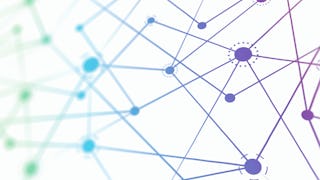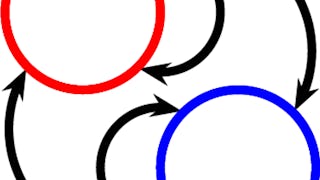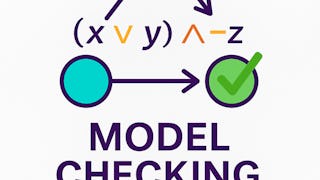The Automated Reasoning: Symbolic Model Checking course presents how the properties of acting systems and programs can be verified automatically. The basic notion is a transition system: any system that can be described by states and steps. We present how in CTL (computation tree logic) properties like reach-ability can be described.

Enjoy unlimited growth with a year of Coursera Plus for $199 (regularly $399). Save now.

Automated Reasoning: Symbolic Model Checking

Instructor: Hans Zantema
2,873 already enrolled
Included with
(26 reviews)
Recommended experience
Skills you'll gain
Details to know

Add to your LinkedIn profile
12 assignments
See how employees at top companies are mastering in-demand skills

There are 4 modules in this course
After a general introduction to the MOOC, this module starts by a general description of model checking.Then Computation Tree Logic (CTL) is introduced: a language in which properties on transition systems can be described. The algorithm to check whether such a property holds is given in an abstract setting, leaving implicit how sets of states are represented.
What's included
5 videos3 assignments
In this module BDDs (binary decision diagrams) are introduced as decision trees with sharing. They represent boolean functions. Extra requirements on both decision trees and BDDs are presented from which uniqueness of the representation can be concluded.
What's included
4 videos3 assignments
After some examples of BDD, the algorithm is presented and discussed to compute the ROBDD of any propositional formula.
What's included
4 videos3 assignments
In this last module the topics of CTL model checking and BDDs are combined: it is shown how BDDs can be used to represent sets of states in a way that the abstract algorithm for CTL mode checking can be used, and much larger state spaces can be dealt with than by using explicit state based model checking. Sever examples are presented.
What's included
4 videos3 readings3 assignments
Instructor

Offered by
Explore more from Software Development

28DIGITAL

28DIGITAL

University of Colorado Boulder
 Status: Preview
Status: PreviewUniversity of Colorado Boulder
Why people choose Coursera for their career





Open new doors with Coursera Plus
Unlimited access to 10,000+ world-class courses, hands-on projects, and job-ready certificate programs - all included in your subscription
Advance your career with an online degree
Earn a degree from world-class universities - 100% online
Join over 3,400 global companies that choose Coursera for Business
Upskill your employees to excel in the digital economy
Frequently asked questions
To access the course materials, assignments and to earn a Certificate, you will need to purchase the Certificate experience when you enroll in a course. You can try a Free Trial instead, or apply for Financial Aid. The course may offer 'Full Course, No Certificate' instead. This option lets you see all course materials, submit required assessments, and get a final grade. This also means that you will not be able to purchase a Certificate experience.
When you enroll in the course, you get access to all of the courses in the Specialization, and you earn a certificate when you complete the work. Your electronic Certificate will be added to your Accomplishments page - from there, you can print your Certificate or add it to your LinkedIn profile.
Yes. In select learning programs, you can apply for financial aid or a scholarship if you can’t afford the enrollment fee. If fin aid or scholarship is available for your learning program selection, you’ll find a link to apply on the description page.
More questions
Financial aid available,

